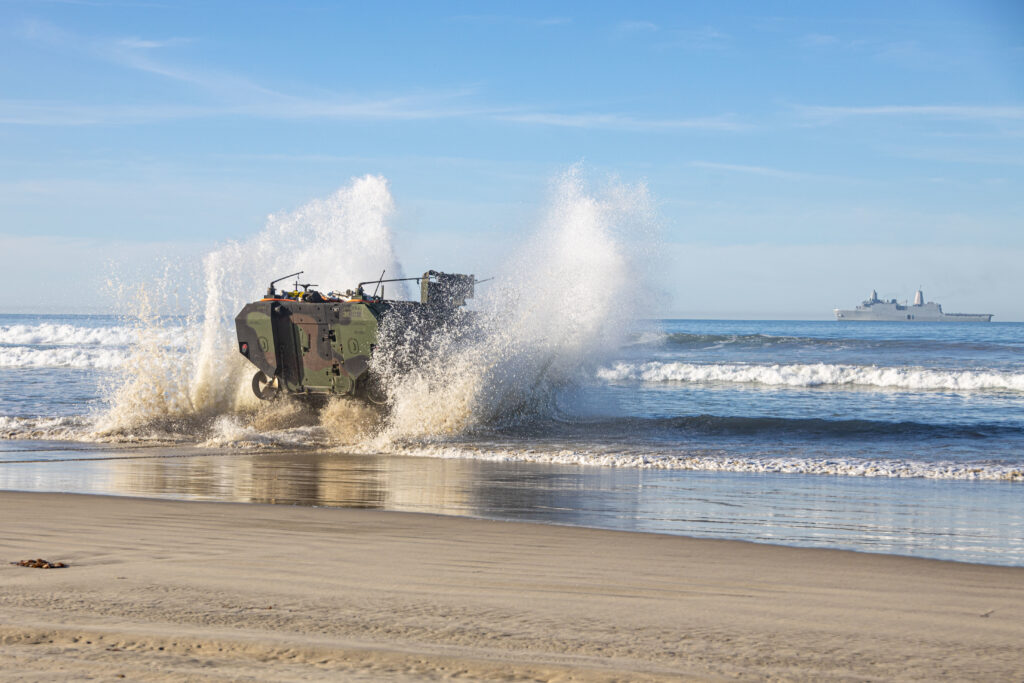
ARLINGTON, Va. — Marine Corps Amphibious Combat Vehicles are authorized to return to open-ocean waterborne operations following the establishment of interim guidance to enhance operational safety when conducting ACV training, Headquarters Marine Corps said Sept. 22.
On July 20, the Marine Corps paused all waterborne ACV operations as a result of a training incident at Marine Corps Base Camp Pendleton, California, two days prior. The service immediately began an internal review to ensure the assault amphibian community’s practices and procedures maintain a capable and ready force without sacrificing the safety of Marines and Sailors.
On July 22, Headquarters Marine Corps authorized ACV water operations in protected waters only, Area 21 and the Del Mar Boat Basin, to sustain crew proficiency and meet entry-level training requirements, but open-ocean and surf restrictions remained until Sept. 22.
“We remain steadfast to the safety of our Marines who conduct amphibious operations, and expect strict adherence to established standards that allows our ACVs to return to waterborne operations,” said Lt. Gen. David J. Furness, deputy commandant for Plans, Policies and Operations. “Our training and discipline allows us to continue sharpening our warfighting abilities to remain the Nation’s premier expeditionary force in readiness.”
The interim maximum surf conditions identified include a significant breaker height of four feet, which allows the ACV to operate safely while maintaining a high-state of readiness for the ACV community. The interim maximum surf conditions are conservative and derive from existing safe operating surf conditions for U.S. Navy and Marine Corps landing craft, and allows the service to better understand surf conditions through ongoing vehicle testing.
Prior to the implementation of the interim guidance, ACV operations remained restricted to protected waters and land operations, to include live-fire training.






